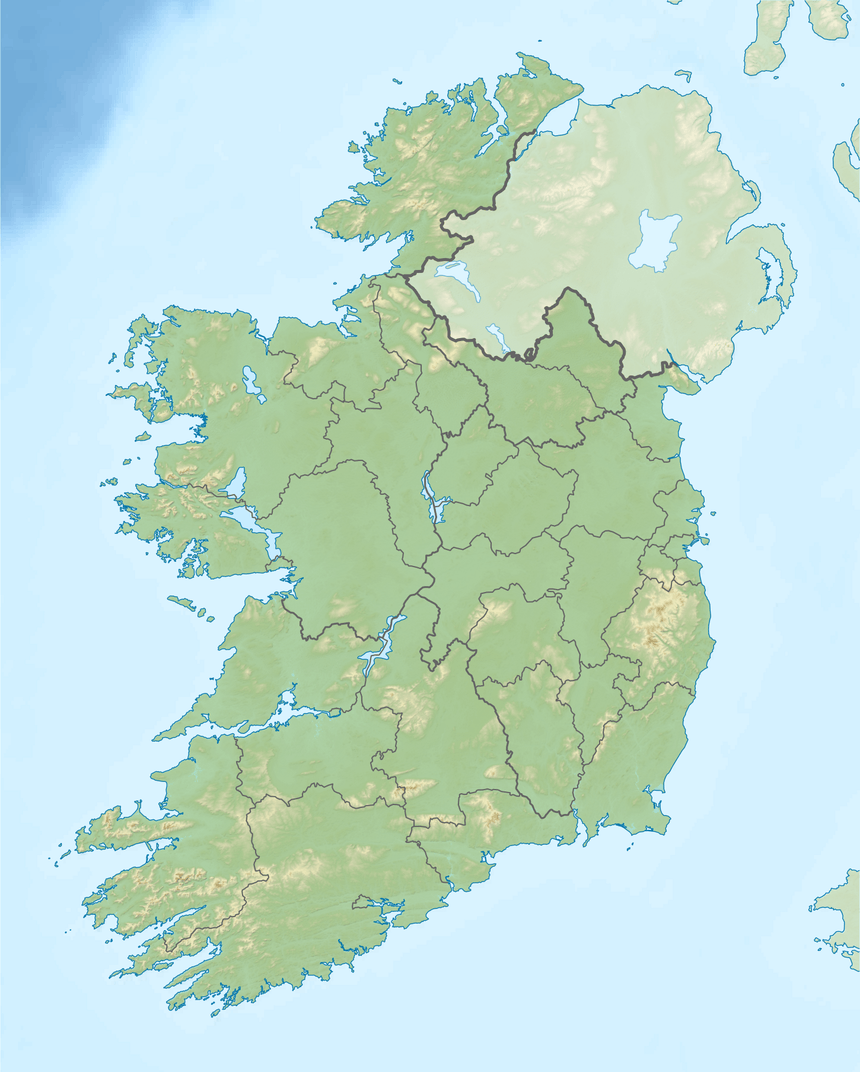Newmarket-on-Fergus (Roman Catholic parish)
Newmarket-on-Fergus is a Roman Catholic parish in County Clare, Ireland, based on the town of Newmarket-on-Fergus. It belongs to the Roman Catholic Diocese of Killaloe.

Origins
The church in Ireland was originally organized around monasteries. The organization into dioceses was established in 1111 AD at the Synod of Ráth Breasail. The first known list of parishes for the diocese of Killaloe dates to 1303, and includes seven civil parishes that make up the present parish of Newmarket-on-Fergus. These were Kilnasoolagh, Tuamfinlough, Bunratty, Drumline, Clonloghan, Kilconry and Kilmaleery.[1]
Tuamfinlough (now Fenloe) is the oldest known settlement in the region of Newmarket, the site of a monastery founded early in the 6th century and led by Saint Luchtigern. The monastery was sacked by Turlough O'Brien in 1054. Bunratty had a large population in the 13th century, protected by the Normans, and probably the other churches were subordinate to Bunratty, apart from Fenloe. Kilnasoolagh became an independent parish in 1463 through a papal mandate. Drumline church dates back at least to the 8th century. Clonloghan church may date to the 10th century. Kilconry church dates to the 15th century, but is named after a 6th-century female saint. Kilmaleery may be named after a local chieftain. These churches were all closed during the Penal Law period.[2]
History
During the chaotic period that followed the "Glorious Revolution" of 1688, two priests served the area, one in Kilnasoolagh and Tuamfinlough, and the other in the five parishes of Bunratty, Drumline, Clonloghan, Kilconry and Kilmaleery. At this time laws strongly discouraged the Catholic religion. James O’Shaughnessy was appointed parish priest of the five parishes in 1776, and when James O’Halloran died in 1782 he was given charge of the other two. The penal laws were eased that year, but due to the shortage of priests the consolidated structure was retained. Three churches replaced the original seven, sited within walking distance of the congregations. The parish retained this scope until 1967, when the parish of St Senan’s Shannon was split off.[1]
Today
The parish of Newmarket-on-Fergus in 2014 had almost 3,800 people with 1,200 homes.[1] There are three churches. Our Lady of the Rosary, Newmarket on Fergus, is a modern church that was dedicated in 1971 by Bishop Michael Harty, replacing the 1802 church. It has seven gables in memory of the original seven parishes.[3] Our Lady of the Wells in Clonmoney (Bunratty parish) dates to around 1829 and was enlarged in 1986-87.[4] St. Conaires in Carrigerry (Kilconry parish) was opened in 1842, replacing a thatched church that was destroyed by a strorm on 6 January 1839.[5]
References
Citations
Sources
- "Newmarket-on-Fergus: Historical Background". Clare County Library. Retrieved 4 March 2014.
- "Our Lady of the Rosary". Newmarket-on-Fergus Parish. Retrieved 5 March 2014.
- "Our Lady of the Wells, Clonmoney". Newmarket-on-Fergus Parish. Retrieved 5 March 2014.
- "Our Parish History". Newmarket-on-Fergus Parish. Retrieved 4 March 2014.
- "St. Conaires, Carrigerry". Newmarket-on-Fergus Parish. Retrieved 5 March 2014.